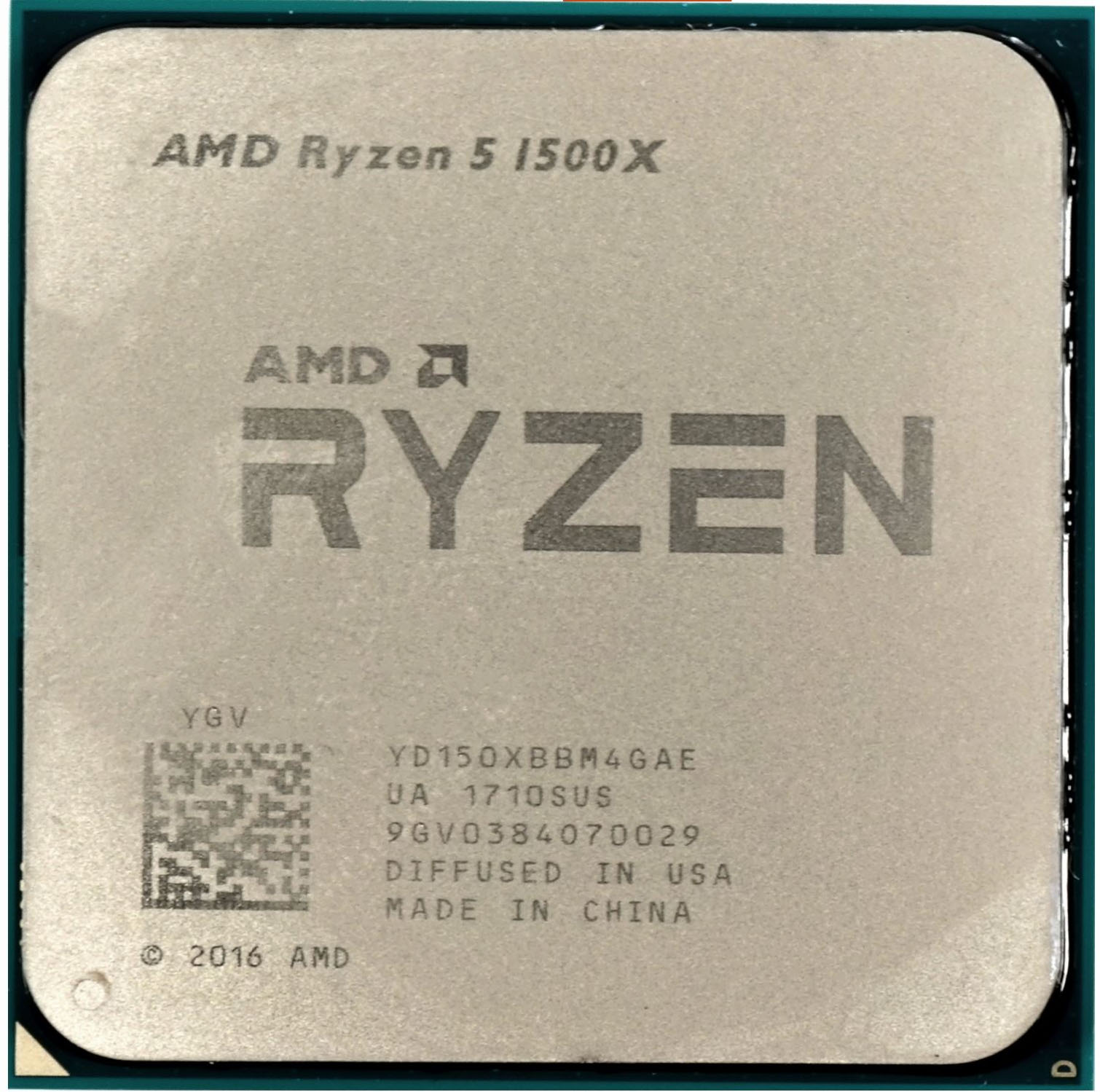Early Verdict
The Ryzen 5 1500X offers a competitive price point and a good mix of characteristics, particularly if you're willing to invest some time in tuning. Gaming remains a soft spot in the Ryzen series, but a bit of tuning provides a good bang-for-the-buck option against comparable locked Intel Core i5's.
Pros
- +
Unlocked ratio multiplier
- +
Multi-threaded performance
Cons
- -
Unoptimized software ecosystem
- -
IPC throughput deficit
Why you can trust Tom's Hardware
Introduction
AMD’s Ryzen 7 derives its value from higher performance than Intel's workstation-oriented Broadwell-E processors at any given price price point. With Ryzen 5, the company plays to the same tune, this time hitting comparable prices as Intel's Core i5 chips, but with simultaneous multi-threading to turn four or six cores into 8T/12T powerhouses.
The six-core Ryzen 5 1600X we recently tested is one such 6C/12T solution, going up against 4C/4T Core i5s and successfully cutting through threaded workloads with greater alacrity. The Ryzen 5 1500X we're benchmarking today loses two cores, but maintains its SMT support to tackle the mainstream competition without compromising performance in rendering, programming, and transcoding apps.
A $190 price tag lands the Ryzen 5 1500X between two processors that constantly fight for a position in our Best CPUs column each month: Core i5-7400 and Core i5-7500. But the 1500X's SMT advantage helps turn the tide in a number of our most taxing benchmarks. Moreover, its 16MB of L3 cache provides twice the capacity per core of Ryzen 7, easily outshining Core i5's meager 6MB last-level cache.
As with all Ryzen processors, the 1500X is purely a CPU, so it lacks integrated graphics. The 65W processor offers a 3.5 GHz base frequency and 3.7 GHz boost clock rate, but it also comes equipped with a more robust eXtended Frequency Range than other Ryzen models. The XFR feature provides a 200 MHz dual-core boost to 3.9 GHz if your thermal solution is beefy enough, whereas other Ryzen chips are limited to an extra 100 MHz.
Specifications
MORE: Everything Zen: AMD Presents New Microarchitecture At HotChips
MORE: Intel Kaby Lake Core i7-7700K, i7-7700, i5-7600K, i5-7600 Review
MORE: Broadwell-E: Intel Core i7-6950X, 6900K, 6850K & 6800K Review
Get Tom's Hardware's best news and in-depth reviews, straight to your inbox.
Intel's competing Core i5-7500 runs at 3.4 GHz by default, but employs Turbo Boost to hit 3.8 GHz under lightly-threaded workloads. The Kaby Lake architecture also enjoys a ~10% advantage in IPC throughput. Unfortunately, though, a locked ratio multiplier keeps you from easy overclocks.
AMD caters to the enthusiast market by unlocking all of its Ryzen CPUs on X370- and B350-based motherboards.
Most Socket AM4 motherboards require a new thermal solution or conversion kit (Asus does sell models with elongated holes that support AM3 and AM4 coolers). If you grab a Ryzen 7 1800X, for example, that means shopping for a new heat sink/fan or liquid cooler. But AMD does include its 95W Wraith Spire with the Ryzen 5 1500X. At stock clock rates or under conservative overclocks, it should be ample. Expect more aggressive tuning to require a higher-end third-party cooler, though. And for comparison, Intel's Core i5s do comes with bundled heat sinks and fans.
All of the existing Ryzen models start life with eight physical cores and the same underlying dual-CCX design. Each CCX hosts four cores. AMD disables these resources symmetrically, either due to manufacturing defects or for differentiation purposes, to create the six- and four-core variants. Ryzen 5 1500X utilizes two cores per CCX in a 2+2 configuration.
| Ryzen Memory Support | MT/s |
|---|---|
| Dual-Channel/Dual-Rank/Four-DIMM | 1866 |
| Dual-Channel/Single-Rank/Four-DIMM | 2133 |
| Dual-Channel/Dual-Rank/Two-DIMM | 2400 |
| Dual-Channel/Single-Rank/Two-DIMM | 2677 |
The cores communicate via AMD's Infinity Fabric, which we covered in our AMD Ryzen 5 1600X CPU Review. To summarize some of our findings in that story, the communication delay between CCX modules does have an impact on performance. Overclocking the memory subsystem helps reduce Infinity Fabric latency, which benefits application performance. So, we suggest splurging on a 3200 MT/s-capable kit.
Due to its common design, we expect the 1500X to hit an overclocking ceiling around 3.9 to 4.0 GHz. At those frequencies, AMD has an advantage over Intel's multiplier-locked Core i5s. The 1500X also sports the familiar bevy of Ryzen features, such as the SenseMI suite, a dual-channel memory controller, and Socket AM4 compatibility.
MORE: Best CPUs
MORE: Intel & AMD Processor Hierarchy
MORE: All CPU Content

Paul Alcorn is the Editor-in-Chief for Tom's Hardware US. He also writes news and reviews on CPUs, storage, and enterprise hardware.
